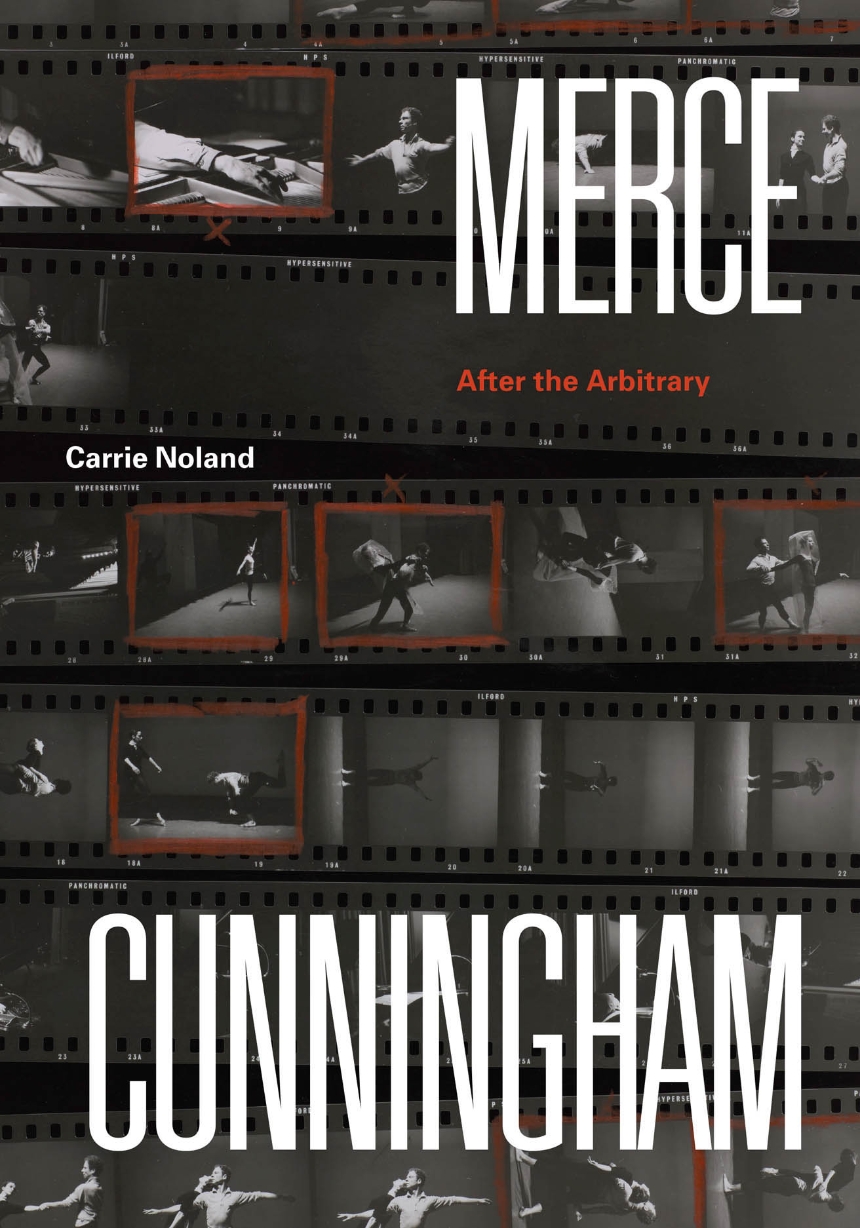One of the most influential choreographers of the twentieth century, Merce Cunningham is known for introducing chance to dance. Far too often, however, accounts of Cunningham’s work have neglected its full scope, focusing on his collaborations with the visionary composer John Cage or insisting that randomness was the singular goal of his choreography. In this book, the first dedicated to the complete arc of Cunningham’s career, Carrie Noland brings new insight to this transformative artist’s philosophy and work, providing a fresh perspective on his artistic process while exploring aspects of his choreographic practice never studied before.
Examining a rich and previously unseen archive that includes photographs, film footage, and unpublished writing by Cunningham, Noland counters prior understandings of Cunningham’s influential embrace of the unintended, demonstrating that Cunningham in fact set limits on the role chance played in his dances. Drawing on Cunningham’s written and performed work, Noland reveals that Cunningham introduced variables before the chance procedure was applied and later shaped and modified the chance results. Chapters explore his relation not only to Cage, but also Marcel Duchamp, Robert Rauschenberg, James Joyce, and Bill T. Jones. Ultimately, Noland shows that Cunningham approached movement as more than “movement in itself,” and that his work enacted archetypal human dramas. This remarkable book will forever change our appreciation of the choreographer’s work and legacy.
Examining a rich and previously unseen archive that includes photographs, film footage, and unpublished writing by Cunningham, Noland counters prior understandings of Cunningham’s influential embrace of the unintended, demonstrating that Cunningham in fact set limits on the role chance played in his dances. Drawing on Cunningham’s written and performed work, Noland reveals that Cunningham introduced variables before the chance procedure was applied and later shaped and modified the chance results. Chapters explore his relation not only to Cage, but also Marcel Duchamp, Robert Rauschenberg, James Joyce, and Bill T. Jones. Ultimately, Noland shows that Cunningham approached movement as more than “movement in itself,” and that his work enacted archetypal human dramas. This remarkable book will forever change our appreciation of the choreographer’s work and legacy.
304 pages | 17 color plates, 54 halftones | 7 x 10 | © 2020
Art: American Art, Art--General Studies
Music: General Music
Reviews
Table of Contents
Introduction
One Recycling the Readymade: Marcel Duchamp and the Rendez-Vous in Walkaround Time
Two Summerspace: The Body in Writing
Three Nine Permanent Emotions and Sixteen Dances: Drama in Cunningham
Four “Passion in Slow Motion”: Suite for Five and the Photographic Impulse
Five Bound and Unbound: The Reconstruction of Crises
Six The Ethnics of Vaudeville, the Rhythms of Roaratorio
Seven Buddhism in the Theatre
One Recycling the Readymade: Marcel Duchamp and the Rendez-Vous in Walkaround Time
Two Summerspace: The Body in Writing
Three Nine Permanent Emotions and Sixteen Dances: Drama in Cunningham
Four “Passion in Slow Motion”: Suite for Five and the Photographic Impulse
Five Bound and Unbound: The Reconstruction of Crises
Six The Ethnics of Vaudeville, the Rhythms of Roaratorio
Seven Buddhism in the Theatre
Acknowledgments
Notes
Bibliography
Index
Notes
Bibliography
Index
Awards
Association for Theatre in Higher Education: ATHE Outstanding Book Award
Won
